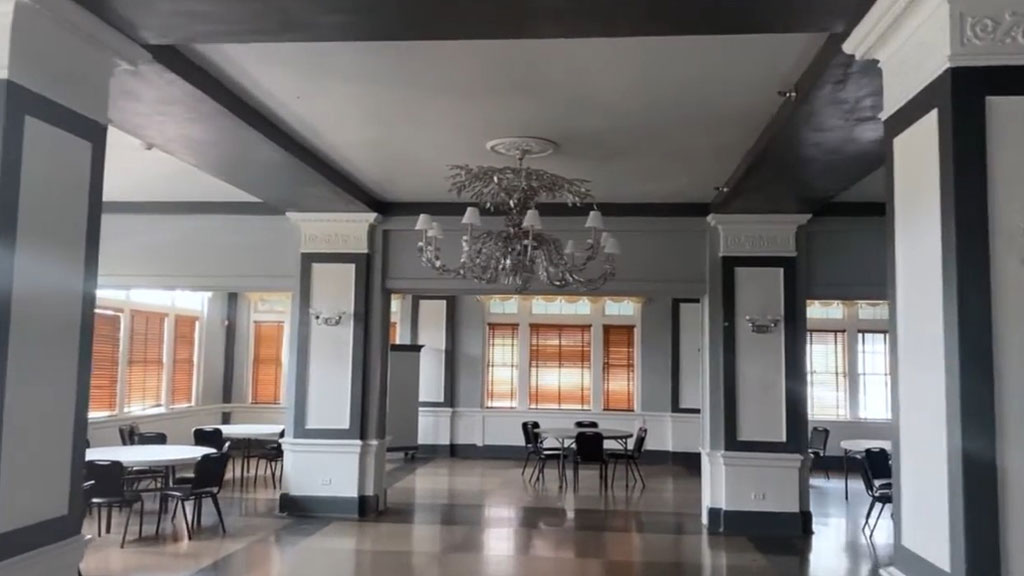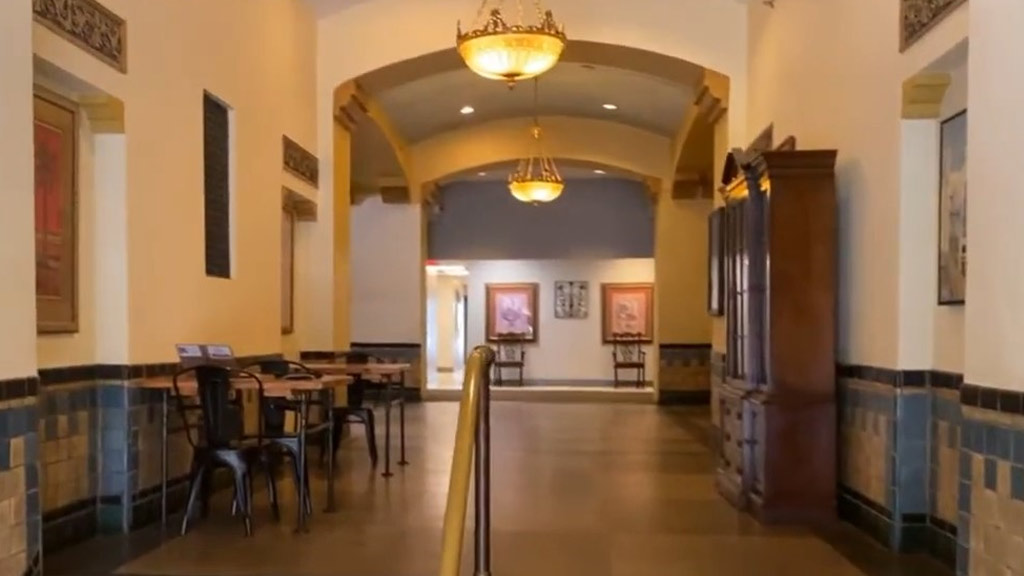When you think of the historic landmarks that shape a city’s identity, the Marion Hotel in Salem stands out as a cornerstone of Oregon’s rich history.
This iconic building has witnessed the evolution of Salem like no other, leaving an indelible mark on the community.
From its humble beginnings to becoming a pivotal part of the city’s landscape, the Marion Hotel’s story is intertwined with the very fabric of Salem’s past.
As you delve into the history of the Marion Hotel, you’ll uncover a tale that goes beyond bricks and mortar. It’s a narrative of resilience, change, and the enduring spirit of a city that has seen it all.
From the bustling streets it once towered over to the echoes of the past that still linger, the Marion Hotel’s legacy is a testament to the enduring significance of historical landmarks in shaping a community’s identity.
Historical Overview of Marion Hotel
The Marion Hotel in Salem is not just a building; it’s a testament to the resilience of a community and the transformative power of time.
Its story spans generations, marked by moments of tragedy and triumph, shaping the narrative of Salem’s history.
Origins and Early Years
The Marion Hotel in Salem, Oregon, has a rich history that dates back to its early beginnings. Constructed as a four-story structure, the hotel featured red bricks facing Commercial Street and Ferry Streets SE.
With its French influence predominating along Franco-Italian lines, the hotel stood out with 28 chimneys adorning its mansard roof, resembling sentries on a watchtower.
The first floor boasted high ceilings of 17 feet, providing a grandeur that set it apart. The second floor, with its 15-foot ceilings, contained 11 suites and eight single rooms, all carpeted with Brussels to provide a touch of luxury as guests wandered along the halls.
Notable Events and Evolution
Over time, the Marion Hotel became a significant fixture in Salem’s landscape, witnessing various notable events that shaped its identity.
The hotel, with its 150 rooms, accommodated a diverse workforce comprising cooks, waitresses, bartenders, custodial staff, and maids.
Despite its prominence, the Marion Hotel faced challenges, such as the devastating fire that led to the collapse of its brick walls onto the surrounding streets, causing significant damage.
However, through resilience and community support, the hotel endured and continued to be a cornerstone of Salem’s history, serving as a testament to the city’s spirit and the importance of preserving historical landmarks.
Architectural Significance
The architectural significance of the Marion Hotel lies not only in its aesthetic beauty but also in its historical context and innovative design elements for its time.
Design and Construction

The Marion Hotel in Salem, Oregon, boasts a rich history that reflects its unique design and construction. Originally a four-story building with French architectural influences, the hotel was constructed with grand interiors that showcased the elegance of its time.
The meticulous design and quality construction of the Marion Hotel were evident in its intricate facade and structural details, making it a prominent structure in Salem’s cityscape.
The Marion Hotel in Salem, Oregon, stands as a testament to the city’s architectural heritage, blending French influences with exquisite interiors. Its grand facade and meticulous construction have solidified its status as a prominent landmark in Salem’s history.
Unique Architectural Features
One of the Marion Hotel’s most striking features was its green painted red brick walls that adorned the exterior of the building.
These distinctive walls not only added a pop of color to the streets of Commercial Street and Ferry Streets SE but also symbolized the hotel’s historic significance in the area.
Additionally, the grandeur of the Marion Hotel was enhanced by its intricate brickwork and architectural elements, setting it apart as a unique and iconic landmark in Salem.
The Marion Hotel’s architectural significance lies not only in its design and construction but also in its enduring presence as a historic landmark that has witnessed the evolution of Salem over the years.
The careful preservation of its unique architectural features serves as a tribute to the city’s heritage and the importance of maintaining connections to the past in shaping the identity of a community.
The Marion Hotel Fire of 1971

The Marion Hotel Fire of 1971 stands as a pivotal moment in the history of Salem, marking a tragic chapter in the story of the iconic establishment. On a fateful night, flames engulfed the historic building, casting a pall of devastation over the city.
The Event Details
In 1971, a catastrophic event struck the Marion Hotel in Salem, Oregon. On November 12, a fire engulfed the hotel, originating in the ceiling of the main floor kitchen. The blaze quickly spread, triggering a massive emergency response.
Approximately 175 firefighters, including Salem’s entire fire department along with personnel from Keizer and Marion County Fire District 1, battled the flames relentlessly.
Despite the fierce efforts, the fire devoured the Marion Hotel entirely. The fire broke out while only about 75 of the hotel’s rooms were in use, averting a potential tragedy as no lives were lost.
The destructive inferno caused the brick walls of the four-floor structure to collapse onto Commercial Street and Ferry Streets SE.
The harrowing scene saw green painted red bricks cascading onto the streets as flames soared into the air, creating chaos and destruction.
Aftermath and Rebuilding
Following the devastating fire, the Marion Hotel was reduced to ruins, necessitating a fresh start. In 1973, a new motel-style Marion Hotel and a Black Angus Restaurant were erected on the same site to rejuvenate the area.
However, the desire for progress led to these structures being demolished in 2004 to make way for the construction of the Salem Conference Center and the Phoenix Grand Hotel.
This transformation underscored the resilience of the community in the face of adversity, as the site that once bore witness to tragedy was revitalized to pave the way for a new chapter in Salem’s history.
Marion Hotel’s Role in Salem’s Development

The Marion Hotel has played a multifaceted role in Salem’s development, serving as more than just a place of lodging but as a focal point for social interaction, economic activity, and cultural exchange throughout its rich history.
Impact on Local Economy
The Marion Hotel played a significant role in shaping Salem’s local economy. Before its unfortunate demise in a fire in 1971, the hotel was a hub for economic activities in the city.
With 150 rooms and various service facilities, including conference and meeting rooms, the Marion Hotel attracted tourists and hosted numerous events, contributing to the city’s tourism revenue.
The presence of the hotel also supported local businesses, such as shops and restaurants, by bringing in guests who would patronize these establishments.
The loss of the hotel in the fire had both immediate and long-term effects on the local economy, prompting the need for reconstruction and revitalization efforts to fill the void left by this iconic landmark.
Cultural and Social Contributions
Beyond its economic impact, the Marion Hotel made significant cultural and social contributions to the community of Salem.
The hotel’s unique architecture, influenced by Franco-Italian design, added to the city’s cultural heritage and architectural diversity.
It served as a venue for various cultural events, conferences, and meetings, fostering intellectual and social exchanges among residents and visitors.
The destruction of the hotel in the fire marked a loss not only in terms of physical structure but also in the cultural fabric of Salem.
However, the resilience of the community led to the establishment of new establishments on the same site, carrying forward the legacy of the Marion Hotel and continuing to contribute to the cultural and social vibrancy of Salem.
Preservation and Modern Usage
Despite facing challenges and tragedies throughout its history, the Marion Hotel has undergone a remarkable transformation, evolving from a relic of the past into a vivid symbol of resilience and renewal.
Today, its preservation and modern usage stand as a testament to the community’s dedication to honoring its heritage while embracing progress.
Restoration Efforts
After the tragic fire that led to the Marion Hotel’s destruction in 1971, efforts were made to honor its legacy and historical significance. Restoration projects aimed to preserve the memories and heritage associated with the iconic landmark.
The restoration process involved meticulous research and architectural planning to recreate elements of the original structure that reflected the hotel’s French architectural influences.
By meticulously preserving the essence of the Marion Hotel, these efforts paid homage to its historical importance in Salem, Oregon.
Current Functions and Attractions
Today, the site of the Marion Hotel stands as a testament to the city’s resilience and commitment to preserving its rich history.
The establishment that rose from the ashes now serves as the Salem Conference Center and the Phoenix Grand Hotel.
These modern establishments continue to play a vital role in Salem’s local economy by attracting visitors and hosting various events.
The Conference Center and Grand Hotel offer state-of-the-art facilities for conferences, weddings, and other social gatherings, contributing to the vivid cultural scene of Salem.
The legacy of the Marion Hotel lives on through these contemporary venues, enriching the city’s heritage and serving as a symbol of transformation and progress.
Frequently Asked Questions
What is the significance of the Marion Hotel’s transformation?
The Marion Hotel’s transformation into the Salem Conference Center and Phoenix Grand Hotel symbolizes Salem’s resilience and commitment to preserving its history.
How has the legacy of the Marion Hotel been preserved?
The legacy of the Marion Hotel lives on through the Salem Conference Center and Phoenix Grand Hotel, embodying transformation and progress in Salem while honoring the history and heritage of the original landmark.
Conclusion
The Marion Hotel in Salem, Oregon, stands as a testament to resilience and transformation. Despite the tragic fire in 1971, the restoration efforts have preserved its historical significance.
Today, the Salem Conference Center and Phoenix Grand Hotel continue to honor the Marion Hotel’s legacy.
These modern establishments not only contribute to the local economy but also enrich Salem’s cultural landscape. By hosting events and attracting visitors, they ensure that the Marion Hotel’s spirit lives on.
The Marion Hotel’s journey from devastation to revitalization showcases the community’s commitment to preserving its heritage. As you explore Salem, remember the Marion Hotel’s story of renewal and progress.
Jaclyn Lowe